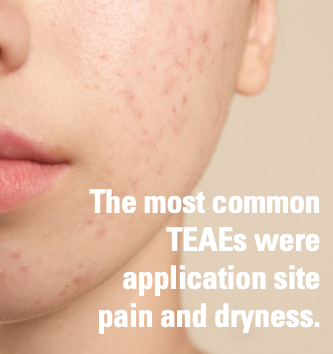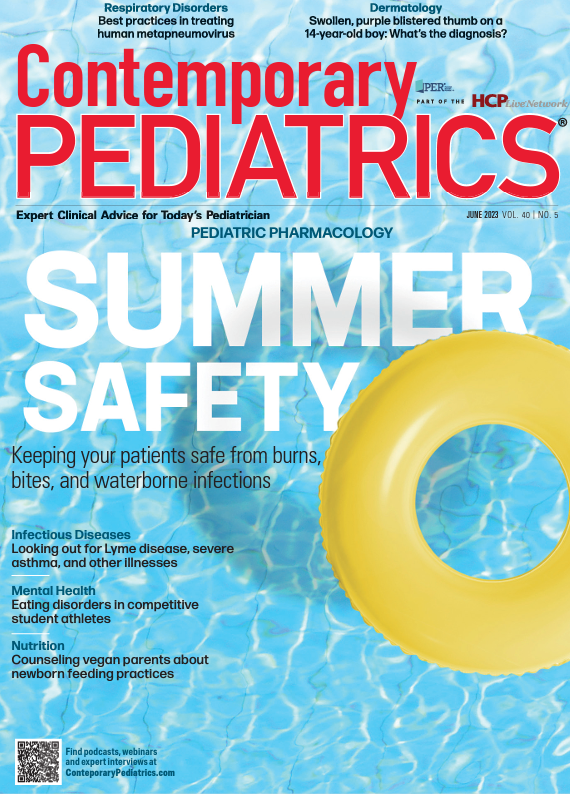A better acne treatment may be coming
After 12 weeks of treatment, 55.8% of participants receiving IDP-126 experienced at least a 70% reduction from baseline in inflammatory and noninflammatory lesions
A better acne treatment may be coming | Image Credit: Contemporary Pediatrics®

A fixed-dose, triple-combination formula being developed to treat acne is more effective against this teenage scourge than 3 traditional 2-component gels, according to a recent trial (NCT03170388).
The 394 pediatric participants with moderate to severe acne (mean age, 14.9 years) had a baseline evaluator’s global severity score of 3 (moderate). They were randomized to 12 weeks of once-daily treatment with one of 4 combination products, including the first fixed-dose, triple-combination product in development for acne treatment in patients 9 years or older: clindamycin phosphate, adapalene, and polymeric mesh gel (IDP-126). The other 3 products were dyad gels benzoyl peroxide (BPO)/adapalene; clindamycin phosphate/BPO; and clindamycin phosphate/adapalene. The 388 controls received vehicle gel, a dermatologic drug product that enhances delivery and efficacy of an active compound.
After 12 weeks of treatment, 55.8% of participants receiving IDP-126 experienced at least a 70% reduction from baseline in inflammatory and noninflammatory lesions. These reductions were significantly greater than those in patients treated with any of the dyad combinations (range, 30.8%-33.9%) or vehicle gel, whose reductions were less than two-thirds of those treated with IDP-126. Further, significant reductions in lesions were seen with IDP-126 as early as week 2 and persisted throughout the study.
In addition, compared with other treatment groups, participants who received IDP-126 experienced greater improvements in quality of life, as measured by the Acne-Specific Quality of Life Questionnaire, which covers 4 domains: self-perception, role-emotional, role-social, and acne symptoms. In the 1 exception, participants treated with clindamycin phosphate/adapalene experienced a greater improvement in the role-emotional domain than those in other treatment groups.
Teenage girl with acne | Image Credit: © New Africa - © New Africa - stock.adobe.com.

As to safety and tolerability, rates of treatment-emergent adverse events (TEAEs) were higher with IDP-126 than with the other treatments, although these were mostly mild or moderate in all groups, and no serious AEs were related to IDP-126. The most common TEAEs were application site pain and dryness. Only a few participants discontinued the trial because of a TEAE, with the highest rate in the BPO/adapalene group (4.8%).
THOUGHTS FROM DR FARBER:
We will see what happens with this. I do have 1 prediction: When the combination product is released (assuming it is available as a separate item), its cost will be much greater than the 3 components purchased individually.
Click here to read more from the June, 2023 issue of Contemporary Pediatrics®.
Reference:
Eichenfield LF, Stein Gold L, Kircik LH, et al. Triple-combination clindamycin phosphate 1.2%/benzoyl peroxide 3.1%/adapalene 0.15% gel for moderate-to-severe acne in children and adolescents: randomized phase 2 study. Pediatr Dermatol. Published online March 22, 2023. doi:10.1111/pde.15283

Recognize & Refer: Hemangiomas in pediatrics
July 17th 2019Contemporary Pediatrics sits down exclusively with Sheila Fallon Friedlander, MD, a professor dermatology and pediatrics, to discuss the one key condition for which she believes community pediatricians should be especially aware-hemangiomas.